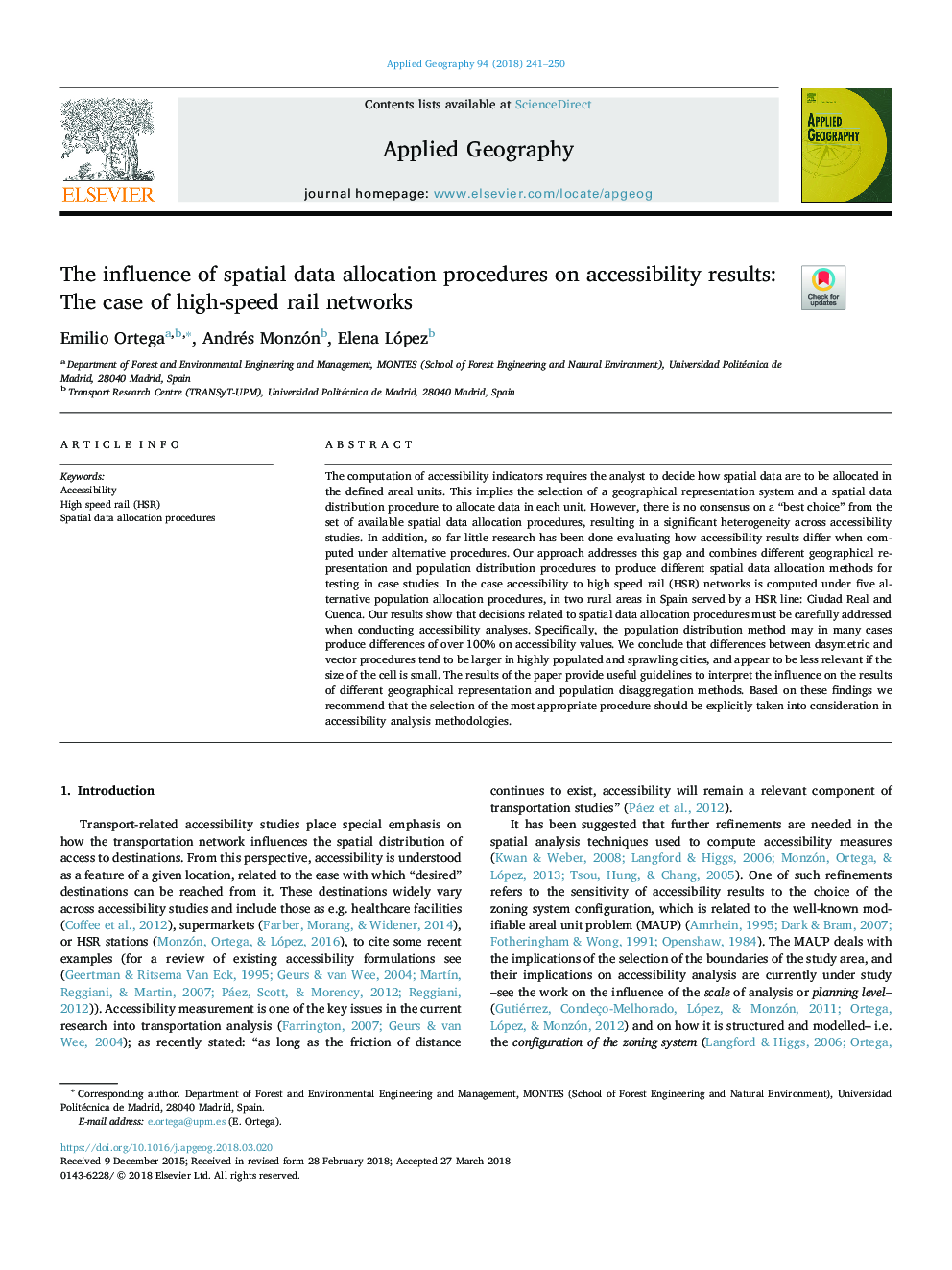| کد مقاله | کد نشریه | سال انتشار | مقاله انگلیسی | نسخه تمام متن |
|---|---|---|---|---|
| 6538291 | 1421023 | 2018 | 10 صفحه PDF | دانلود رایگان |
عنوان انگلیسی مقاله ISI
The influence of spatial data allocation procedures on accessibility results: The case of high-speed rail networks
ترجمه فارسی عنوان
تأثیر روش های تخصیص داده های فضایی بر نتایج دسترسی: مورد شبکه های سریع راه آهن
دانلود مقاله + سفارش ترجمه
دانلود مقاله ISI انگلیسی
رایگان برای ایرانیان
موضوعات مرتبط
علوم زیستی و بیوفناوری
علوم کشاورزی و بیولوژیک
جنگلداری
چکیده انگلیسی
The computation of accessibility indicators requires the analyst to decide how spatial data are to be allocated in the defined areal units. This implies the selection of a geographical representation system and a spatial data distribution procedure to allocate data in each unit. However, there is no consensus on a “best choice” from the set of available spatial data allocation procedures, resulting in a significant heterogeneity across accessibility studies. In addition, so far little research has been done evaluating how accessibility results differ when computed under alternative procedures. Our approach addresses this gap and combines different geographical representation and population distribution procedures to produce different spatial data allocation methods for testing in case studies. In the case accessibility to high speed rail (HSR) networks is computed under five alternative population allocation procedures, in two rural areas in Spain served by a HSR line: Ciudad Real and Cuenca. Our results show that decisions related to spatial data allocation procedures must be carefully addressed when conducting accessibility analyses. Specifically, the population distribution method may in many cases produce differences of over 100% on accessibility values. We conclude that differences between dasymetric and vector procedures tend to be larger in highly populated and sprawling cities, and appear to be less relevant if the size of the cell is small. The results of the paper provide useful guidelines to interpret the influence on the results of different geographical representation and population disaggregation methods. Based on these findings we recommend that the selection of the most appropriate procedure should be explicitly taken into consideration in accessibility analysis methodologies.
ناشر
Database: Elsevier - ScienceDirect (ساینس دایرکت)
Journal: Applied Geography - Volume 94, May 2018, Pages 241-250
Journal: Applied Geography - Volume 94, May 2018, Pages 241-250
نویسندگان
Emilio Ortega, Andrés Monzón, Elena López,
